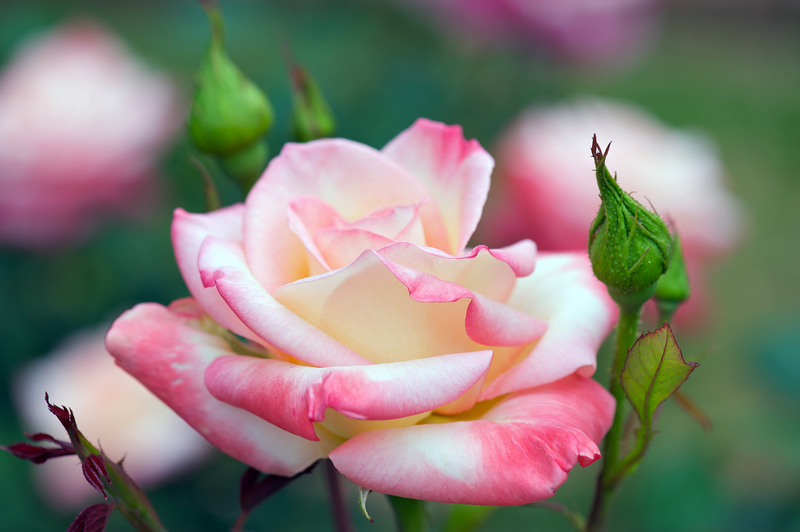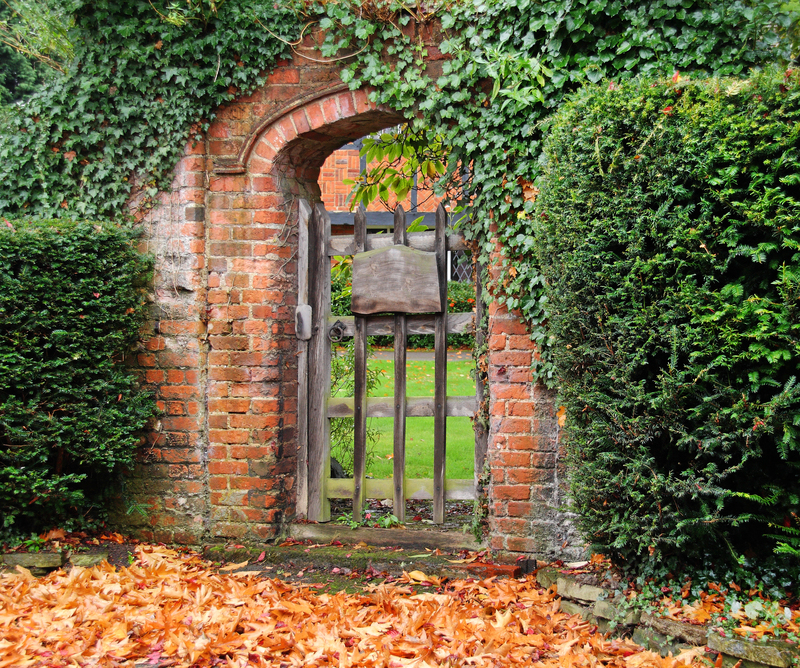Making Your Garden a Fun Learning Space for Kids
Posted on 12/06/2025
Making Your Garden a Fun Learning Space for Kids
The garden is more than just a patch of greenery - it's a vibrant ecosystem ripe for exploration and discovery. By transforming your backyard or local garden into a dynamic, fun learning space for kids, you'll nurture lifelong curiosity, creativity, and a love for nature in your children. This comprehensive guide will provide you with creative ideas, practical tips, and step-by-step instructions for making your garden an educational playground and a source of endless joy for your little ones.

Why Turn Your Garden into a Learning Space?
- Hands-on Learning: Kids learn best by doing. The garden offers hands-on educational experiences where they can observe, touch, and experiment.
- Connection to Nature: Spending time outdoors boosts children's mental and physical health, increasing their appreciation for the environment.
- STEAM Education: Activities in the garden can integrate science, technology, engineering, art, and math, feeding curiosity and skill development.
- Family Bonding: Gardening creates opportunities for quality family time and teaches important life skills like responsibility and patience.
Creative Ways to Make Your Garden a Kid-Friendly Learning Space
1. Create Themed Learning Corners
Divide your garden into dedicated zones or themed corners, each offering a unique educational focus and interactive experience.
- Bug and Insect Hotel: Build a simple bug hotel using wood, twigs, and bamboo canes. Encourage kids to observe insects, record findings, and learn about their role in the ecosystem.
- Mini Science Lab: Set up a table with magnifying glasses, soil samples, and plant cuttings. Use this as a space for experiments and discoveries.
- Herb and Sensory Garden: Plant herbs like basil, mint, and rosemary for a sensory exploration. Kids can smell, touch, and even taste plants while learning their uses.
- Math Path: Use stepping stones with numbers, shapes, and patterns for fun counting and sequencing games.
- Reading Nook: Create a cozy corner with cushions and weatherproof books about wildlife and gardening for outdoor storytime.
2. Incorporate STEAM Activities in the Garden
STEAM (Science, Technology, Engineering, Art, and Math) activities transform outdoor spaces into interactive science labs.
- Measure Plant Growth: Give kids a ruler to track how tall their sunflowers grow each week. Chart the data on a fun, colorful graph.
- Weather Station: Build simple rain gauges or wind vanes. Record daily observations and discuss the water cycle.
- DIY Garden Engineering: Guide children in constructing birdhouses or simple trellises, using math to measure and design.
- Garden Art Projects: Paint plant markers, create rock mosaics, or make leaf prints for creative expression.
- Plant Parts Discovery: Dig up radishes and examine roots, stems, leaves, and flowers. Use diagrams for comparison.
3. Hands-On Planting Activities
Nothing beats the excitement of planting a seed and watching it grow. Give your children a sense of ownership by letting them choose what to plant. Try these fun, educational planting projects:
- Sunflower Race: Each child plants a sunflower seed; measure whose plant grows tallest by end of summer.
- Pizza Garden: Plant tomatoes, basil, and peppers for ingredients kids can harvest and turn into homemade pizza together.
- Butterfly Garden: Select nectar-rich flowers to attract butterflies. Teach children about metamorphosis and pollination.
- Vegetable Maze: Arrange fast-growing veggies like beans or corn in a pattern, creating a living maze.
- Windowsill Sprouts: For limited space, grow cress or microgreens indoors and monitor daily progress.
Learning Opportunities in Every Season
Spring:
- Sow seeds, transplant seedlings, observe earthworms, and study pollinators at work.
Summer:
- Harvest fruits and vegetables, water plants, set up outdoor art stations, and monitor rapid plant growth.
Autumn:
- Collect leaves for crafts, learn about composting, save seeds for next year, and study hibernating insects.
Winter:
- Focus on bird feeders, build bug hotels, plan next year's garden, or bring snow inside for science experiments.
Top Garden Learning Projects for Children
1. Composting Together
Teach kids about recycling, decomposition, and nutrition by setting up a family compost bin. Discuss how kitchen scraps and garden waste break down into rich soil. Let children monitor the process and use their compost in future planting projects.
2. Wildlife Observation Journals
Equip your kids with notebooks to document backyard wildlife. They can draw, photograph, or take notes on birds, bugs, and small mammals they spot. This practice encourages scientific observation and literacy skills.
3. DIY Natural Dye Workshop
Harvest petals, leaves, and roots like beet or turmeric to create natural dyes. Explore artistic techniques like tie-dye or stamping with home-grown colors.
4. Water Conservation Challenge
Discuss the water cycle and the importance of conservation. Set up rain barrels, decorate watering cans, and track garden water use. Make a game out of using the least amount of water while keeping plants healthy.
5. Building Bird Feeders and Baths
Craft simple feeders from pinecones, yarn, and peanut butter, or design clay bird baths. Watch feathered friends flock in, and learn about their songs and habits.
Essential Safety Tips for Kids' Garden Learning Spaces
- Supervision: Always supervise young children, especially around sharp tools or water features.
- Child-Safe Tools: Invest in age-appropriate, child-sized garden tools with rounded edges.
- Avoid Chemicals: Stick to organic gardening methods and teach kids never to taste unknown plants.
- Sun Protection: Provide hats, sunscreen, and shaded areas for breaks.
- Teach Respect: Show children how to handle plants, insects, and wildlife with gentle care.
Incorporating Play Into Garden Learning
Blend play and structured learning to keep young minds engaged. Here's how to foster imaginative and physical play in your fun garden learning space:
- Scavenger Hunts: Create lists of items for kids to find--colorful leaves, smooth stones, or fluttering butterflies.
- Obstacle Courses: Weave through beds, hop across stepping stones, crawl under low trellises--combining exercise with exploration.
- Mud Kitchens: Host pretend picnics or cook-offs using mixing bowls, spoons, and mud pies for open-ended play.
- Nature Art: Design collages from gathered seeds, petals, and twigs or build stick structures.
- Garden Storytelling: Make up nature-inspired tales while sitting outdoors, enhancing oral language skills.
Benefits of a Garden Learning Space for Kids
- Boosts Academic Skills: Real-world math, science, and language experiences support classroom learning.
- Promotes Physical Activity: Digging, planting, and exploring keep children active and healthy.
- Improves Focus and Patience: Gardening teaches kids that nature takes time and effort--helping them build perseverance and mindfulness.
- Encourages Healthy Eating: Children are more likely to try fruits and vegetables they grow themselves.
- Builds Environmental Awareness: Kids develop respect and love for our planet through direct interaction.
Tips for Engaging All Ages in Garden Learning
- Toddlers: Use safe sand and water play, sensory plants with interesting textures, and big seeds like beans for easy planting.
- Preschoolers: Try color sorting games, bug hunts, and simple watering tasks with lightweight cans.
- Elementary Kids: Involve them in planning garden layouts, journaling, and tracking plant progress on charts.
- Pre-Teens: Assign complex projects like designing pollinator habitats, managing the compost, or running a mini-farmers market.
How to Set Up Your Fun Learning Garden
- Plan the Space: Involve children in sketching and mapping the garden layout. Allocate spots for learning stations, play, and relaxation.
- Select Easy-to-Grow Plants: Choose hardy flowers, veggies, and herbs suited to your climate. Consider sunflowers, nasturtiums, radishes, lettuce, and cherry tomatoes--great for kids.
- Gather Supplies: Collect tools, pots, seeds, soil, natural materials for crafts, and simple science equipment like magnifying glasses or rulers.
- Make It Colorful and Personal: Paint pots, decorate plant markers, and let children select their favorite colors to make the space truly theirs.
- Incorporate Seating and Shade: Create a comfortable zone for rest and reading--children need cozy nooks as much as activity areas.

Overcoming Garden Learning Challenges
- Small Spaces? Use vertical planters, windowsill gardens, hanging baskets, or community plots.
- Poor Soil? Invest in raised beds or large containers with quality potting mix.
- Busy Schedules? Dedicate just 10-20 minutes a few times a week to keep projects fun and low-pressure.
- No Backyard? Start a balcony garden or join a local community gardening club.
Conclusion: Make Life-Long Learners in Your Garden
Transforming your outdoor space into a fun learning garden for kids is one of the most rewarding investments you can make in your child's growth. Every visit to the garden becomes an opportunity for discovery--unveiling the wonders of nature, science, math, art, and stewardship.
Whether you have an acre of land or a few planters on a balcony, any space can blossom into a hub of imagination, learning, and joy. Start today and watch your children flourish--in nature and in life!

